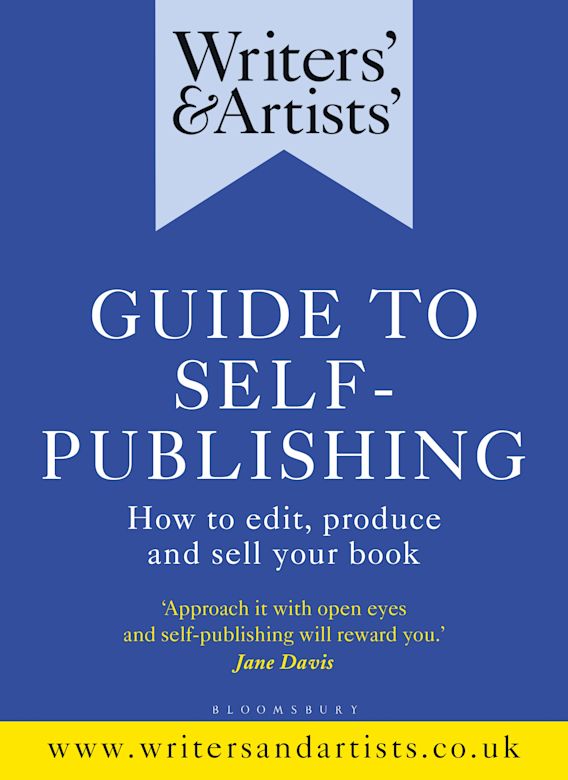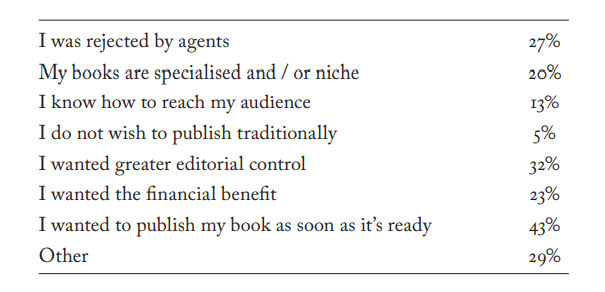In this extract taken from the introduction to the W&A Guide to Self-Publishing, Yearbook Assistant Editor Eden Phillips Harrington explains how the book was put together with help from the W&A community.

Publishing traditionally certainly comes with security, contracts and contacts but usually the trade-off is receiving only a percentage of the money made on the book in terms of author royalties which may then need to be shared with your agent, if you are represented. This makes self-publishing look very financially appealing on paper.
For some indie authors, the amount made could even be described as lucrative. An author could go from earning a small percentage of the profits if published traditionally up to around 70 per cent if published through Amazon Kindle Direct Publishing (KDP). The difference is dizzying, but in practice, the return depends on your market reach, how much the book is sold for (ebooks are usually priced lower than print editions) and how many books you can sell without a big-name publishing house’s logo printed on the book’s spine or its marketing channels.
It must be said that self-publishing is certainly not the easier option of the two, but it is potentially the most rewarding emotionally because of the control offered to the individual author. You are author-driven, not industry-led. The ‘self’ in self-publishing does not mean you have to go it alone if you don’t want to (though this is, of course, an option to someone with enough skill and entrepreneurial spirit). Rather, the ‘self’ gives you the freedom to be your own project manager and build up a team of professionals of your choosing. Many freelancers offering services to independent authors have worked in-house at publishing houses and likely still do some discreet projects for them.
You as an indie author have access to the same pool of talent, so don’t neglect the opportunity to utilise industry professionals. The main hurdle here is being candid and realistic with yourself about what you can and can’t do, and source assistance from those who will help bring your work to life.
So, where to begin? You have already made your first good decision by buying this Guide, which was specifically commissioned by and for our Writers & Artists community. In October 2018, we invited writers to tell us about their self-publishing journeys with a survey asking for any advice they would give a fledgling indie author; the response was staggering.
The feedback we received has gone on to shape and inform this Guide by looking at the experiences, needs and wants of self-published authors just starting out. Of the respondents who took our survey and who have been published previously, 75 per cent had self-published at least one book, whilst for yet-to-be published authors, 83 per cent expressed the wish to be self-published. The rationale behind wanting to self-publish varied, but the most common reasons were as follows (respondents could give several reasons):

Many respondents shared stories of coming tangibly close to traditional publishing deals, of having manuscripts taken on by an agent and out on submission to publishing houses, of receiving ‘rejection with encouraging feedback’ or requests to read the full manuscript. Many commented that they were rejected by agents because their books either straddled age groups for children’s books or fell between genres in adult fiction.
However, these writers were confident that there was indeed a market for their work, and self-publishing gave them a platform to share it and do so quickly. Getting their book to the reader as soon as it was ready was the most popular reason for choosing to publish independently, which may be no surprise when, as discussed previously, it may take up to a year for your manuscript to be edited, designed, printed and distributed once procured by a traditional publisher. An advantage of self-publishing is that it allows a writer to be reactive to market demand and changing trends. This may be updating their ebook’s cover to something more in vogue or a writer having a book that is particularly topical and relevant so they can get their book on the market whilst the interest is still fresh. There is also the element of cutting out the middleman; if you know who your audience is and how to get to them, why ‘spend time on lots of submissions when I could learn to self-publish?’ as one respondent noted.
Coming second only to speed is the desire for greater control; greater creative control in editorial and design decisions, and over how a brand will be built around your work and authorly persona. An indie author is also in control of their own schedules and avoids the pressures of publishing houses. They are at liberty to work at their own pace and likely around existing commitments such as full-time employment or family life. For some writers, self-publishing simply gives them a chance to try: ‘I wanted the experience of self-publishing to compare with traditional publishing’, or ‘I wanted to see if I could manage it myself ’.
You can do it, and you can do it successfully if you allow yourself the time to grow your knowledge base and to begin thinking like a publisher.
The W&A Guide to Self-Publishing is full of practical, nuts-and-bolts information on each aspect of the DIY-publishing process, from editing and page layout, cover design and book production, publicity and selling. Each chapter is written by publishing professionals who are experts in supporting authors, and is full of insights from successful self-published authors themselves.
Comments